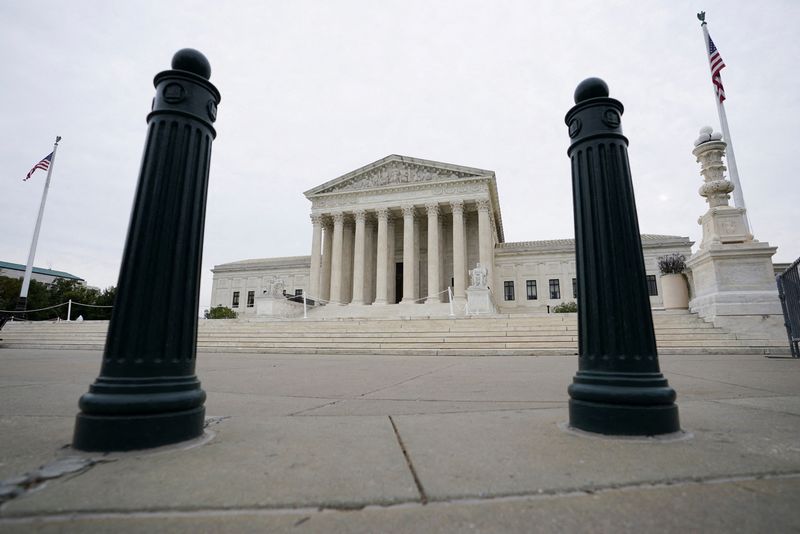U.S. Supreme Court gets back to work with a new face and environmental case
2022.10.03 06:28
[ad_1]

© Reuters. FILE PHOTO: The U.S. Supreme Court building is seen in Washington, U.S. September 30, 2022. REUTERS/Kevin Lamarque/File Photo
By Andrew Chung and Nate Raymond
WASHINGTON (Reuters) – The U.S. Supreme Court kicks off a new term on Monday with a history-making justice joining the bench and an environmental case set to be argued, with major cases due to be decided over the next nine months.
The court’s 6-3 conservative majority has become increasingly assertive, as evidenced by its rulings last term overturning the 1973 Roe v. Wade decision that had legalized abortion nationwide and expanding gun rights.
President Joe Biden’s appointee Ketanji Brown Jackson – the first Black woman justice – joins its liberal bloc after being confirmed by the Senate in April to replace now-retired Justice Stephen Breyer. Jackson becomes the sixth woman justice ever. For the first time, four women will serve on the court together – Jackson, Amy Coney Barrett, Elena Kagan and Sonia Sotomayor.
It is on the first Monday in October annually that the court gets back to work hearing cases. The justices on Monday are scheduled to hear arguments in a case that could limit the scope of a landmark federal environmental law – the Clean Water Act of 1972 – as they consider for a second time a married Idaho couple’s bid to build on property that the U.S. government has deemed a protected wetland.
Chantell and Mike Sackett, who planned to build a home on their property in Priest Lake, Idaho, are appealing a lower court’s ruling favoring the government. The U.S. Environmental Protection Agency in 2007 determined that the property was part of a wetland and that the Sacketts were required to obtain a permit under the Clean Water Act before beginning construction, which they had failed to do.
There has been litigation and political debates over how much of a connection with a waterway a property must have in order to require such a permit. A 2006 Supreme Court ruling led to further uncertainty. The new case gives the conservative majority an opportunity to embrace an approach favored by business groups, with a ruling due by the end of June.
Before hearing arguments on Monday, the court is due to act on a number of appeals, deciding whether or not to hear a variety of cases.
On the term’s second day on Tuesday, the justices are set to hear arguments in an Alabama case that threatens to cripple the 1965 Voting Rights Act, which prohibits racial discrimination in voting.
Alabama is appealing a lower court’s ruling invalidating a map approved by its Republican-controlled legislature drawing the boundaries of the state’s seven U.S. House of Representatives districts. The lower court ordered a new map after finding that the Republican-drawn version diluted the electoral clout of Black voters in violation of the Voting Rights Act. Black voters tend to support Democratic candidates.
At Alabama’s request, the Supreme Court froze that ruling, letting the contested map be used in elections while litigation proceeds.
The map concentrated the voting power of Black people in the state into a single district even though Alabama’s population is 27% Black, while spreading out the rest of the Black population into other districts at levels too small to form a majority.
Alabama argues that drawing a second district to give Black voters a better chance at electing their preferred candidate would itself be racially discriminatory by favoring them at the expense of other voters.
[ad_2]
Source link








